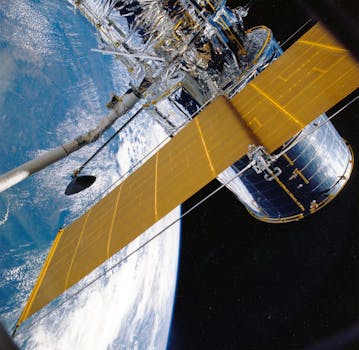
The Future of Satellites: Revolutionizing Global Connectivity
The future of satellites is rapidly evolving, with advancements in space technology and increasing demand for global connectivity. As we continue to rely on satellites for communication, navigation, and remote sensing, the industry is experiencing a significant transformation. The focus keyword Future of Satellites is becoming increasingly important as we explore the possibilities of space technology.
Advancements in Space Technology
One of the primary drivers of the satellite industry’s growth is the rapid advancement of space technology. With the development of new materials, propulsion systems, and electronic components, satellites are becoming smaller, more efficient, and more cost-effective. This has led to an increase in the number of satellite launches, with many countries and private companies investing in space exploration and satellite technology. For instance, the development of reusable rockets by companies like SpaceX has significantly reduced the cost of launching satellites into orbit.
Increased Demand for Global Connectivity
The demand for global connectivity is also driving the growth of the satellite industry. With the increasing use of mobile devices and the internet of things (IoT), there is a growing need for reliable and high-speed connectivity. Satellites are playing a crucial role in providing connectivity to remote and underserved areas, where traditional telecommunications infrastructure is lacking. The development of new satellite constellations, such as OneWeb and Starlink, is aimed at providing global coverage and high-speed connectivity to even the most remote areas.
Emerging Trends and Innovations
Several emerging trends and innovations are shaping the future of satellites. One of the most significant trends is the development of small satellites, also known as CubeSats. These small satellites are incredibly versatile and can be used for a variety of applications, including Earth observation, communication, and navigation. Another trend is the use of satellite-based technologies for IoT applications, such as tracking and monitoring of assets, vehicles, and people. Additionally, the development of quantum satellites is expected to revolutionize the field of secure communication, enabling the creation of unbreakable encryption keys.
Challenges and Opportunities
Despite the many advancements and innovations in the satellite industry, there are also several challenges that need to be addressed. One of the primary challenges is the issue of space debris, which poses a significant threat to the safety and sustainability of space exploration. Another challenge is the need for international cooperation and regulation, as the use of satellites raises complex questions about sovereignty, privacy, and security. However, these challenges also present opportunities for innovation and growth, as companies and governments work together to develop new technologies and regulations that can address these issues.



